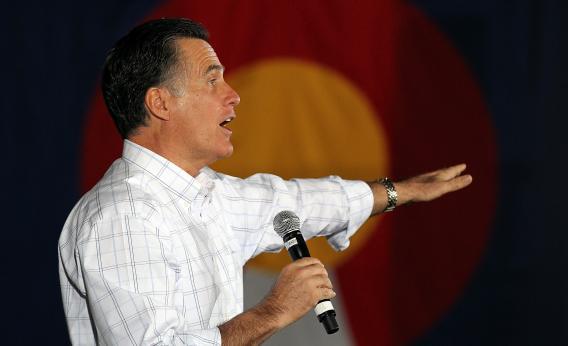The U.S. tax code: Never has so much been done by so many for so few who need so little. The recent public debate about the inequities built into the tax code—triggered by the disclosure of Mitt Romney’s tax returns—is all for the good. So is the call for a “Romney rule” mandating that capital gains be treated as ordinary income, and so be subject to the same top marginal rate of 35 percent that applies to ordinary income, rather than the current top rate of 15 percent.
But we shouldn’t raise the capital gains tax just because it’s a popular idea. The rate should rise for philosophical, economic, and political reasons, as several colleagues and I argued in a recent debate at the Maxwell School of Public Policy at Syracuse University.
The philosophical argument for higher capital gains taxes is not tough. Modern American political philosophy is essentially a battle between John Rawls and Robert Nozick. Rawls, whose famous dictum is that we should maximize the well being of the least well-off member of our society, is generally understood consequently to support progressive tax structures that shift income from the wealthy to the less fortunate—with the proviso that marginal rates that were disincentives to work could over time diminish the well being of the least well off. So progressivity is bounded by that practical limit.
Anybody who is a Rawlsian—which means most Democrats—should favor a Romney rule that would raise his effective 14 percent tax rate to something approaching the 35 percent rate applicable to ordinary earned income.
But how to persuade those who view the world through the prism of Nozick? Nozick acknowledges the need for government to provide certain public goods, such as the national defense and police functions, but he is generally libertarian, and skeptical of an expansive view of government. When it comes to taxation, even those from the Nozick school can be convinced that a flat tax is the best of the bad alternatives. From their perspective, the tax code should not be used to redistribute—but it also should not be used to discriminate. So here is the pitch to them: Give us a flat tax! Do not discriminate between ordinary earned income and capital gains income: Tax them the same! Bring Mitt’s marginal rate to the same level as that of ordinary income. If both can be prudently lowered through loophole closing, that is fine.
This brings us to the economic arguments for raising capital gains rates. The only real caveat—for either Rawls or Nozick—is the claim that a marginal rate of 35 percent on capital gains would be such a disincentive to economic activity that the reduced economic activity would either harm the well being of the least well of member of society—the Rawls concern—or would simply reduce the total level of output, regardless of distributional concerns—the Nozick concern.
On this pure economic issue, all serious studies of the issue—see in particular the reports by Citizens for Tax Justice and work by my fellow debater Len Burman, a superbly well-respected economist—provide dispositive evidence. The issue has been tested in the real world: Capital gains rates have through most of history been the same as those for ordinary income, but occasionally been reduced—or raised. Consequently, we have been able to measure the actual impact of rising and lowering the capital gains tax rate. Raising the rate as we have proposed would not be a disincentive to investment.
The opposition at the debate did not raise any counter evidence. Often what is not said is more important than what is. They said nothing factual about the actual impact of an increase in the marginal rate on capital gains. Instead, they simply asserted that raising the rate would be counterproductive, with no supporting evidence. Their arguments were reminiscent of the apocryphal story of the Russian economist who rejected an answer to a real-life problem by saying: It works in practice, but it doesn’t work in theory.
The argument that capital needs additional incentive to be invested is always asserted, rarely supported. It is time to put the other side to the hard test of proving its case. They can’t. Perhaps this is why so many on both sides of the political aisle—from President Reagan to the Bowles-Simpson report—have supported eliminating the disparity between capital gains tax rates and ordinary income tax rates.
The politics also favor raising capital gains rates. I do not mean the politics of Democrats vs. Republicans. Just the opposite. Americans on both sides—Tea Partiers, Occupiers, and everyone in between—is resentful of perceived inequities and preferences that inure to one favored group or another. Our sense of community, shared sacrifice, and shared obligations has been damaged. Having the benefit of equal burden sharing would be a welcome salve. Our larger politics would be better with a level playing field between earned income and capital gains.
